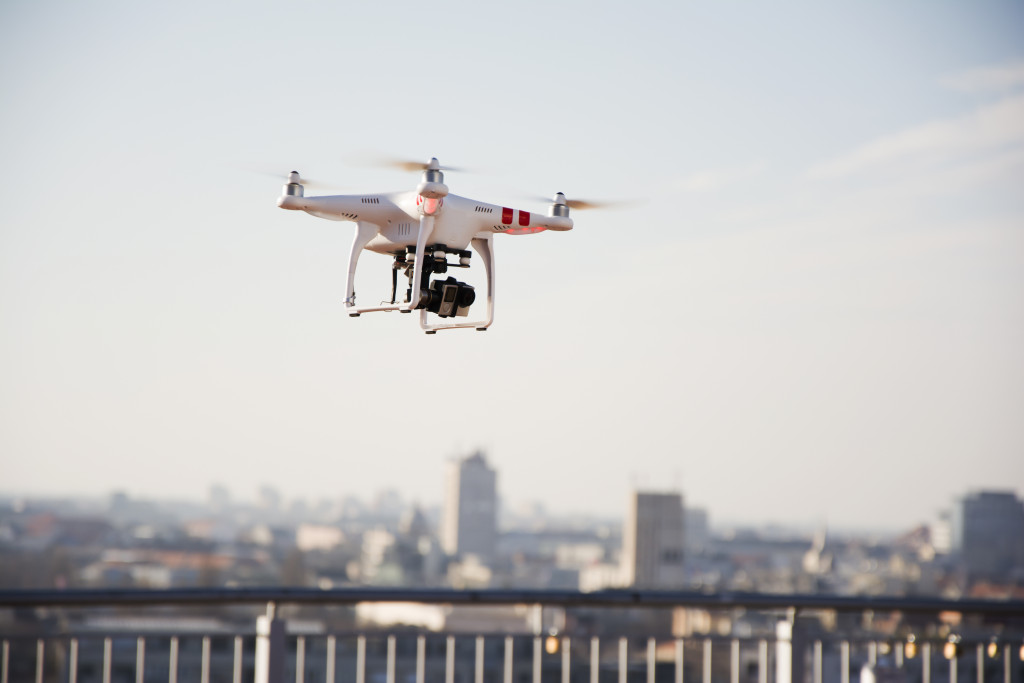Drones are no longer just collectibles or playthings for enthusiasts. Drones assist medical personnel, farmers, retail stores, and more. This technology is being used by a wide range of businesses and organizations for government, commercial, and recreational use. Drones are becoming more frequent and inexpensive as drone technology progresses.
Although some people have mixed feeling about drones, the wide range of roles they can play in multiple settings can’t be denied. From agriculture to disaster relief, drones are too important not to be considered.
Why Drones?
The real question is, why not drones? The use of drones has become more common, especially for practical uses in multiple industries.
Needless to say, social contact was limited for quite some time, and drones became a part of the solution to address this hurdle. They were given the role of the middle man to deliver goods to consumers. Because of their utility, drones are more than a part of pandemic-related trends. It’s safe to say that it’s here to stay. Contrary to what many might know, drones have already been utilized in many industries. Here is a list of, if not all, most industries that have found use in drones today.
1. Retail and E-commerce
Drones, formerly thought to be a thing of the future, are becoming a popular choice for shops to deliver their consumers’ products. The demand for merchants to speed up delivery and turnaround times has increased, especially for e-commerce and retail stores. For example, over the pandemic, Walmart has utilized the use of drones to deliver groceries, health and wellness products, and even at-home COVID-19 test kits.
2. Security and Surveillance
Many drones today are manufactured to do more than deliver items from one place to another. They are also manufactured for the use of law enforcement. Many drones today are sophisticated and precise when it comes to capturing images, such that they are ideal for security and surveillance purposes. Drones are perfect for collecting large volumes of imaging data and producing high-quality aerial photos and videos.
3. Disaster and Emergency Relief
In the aftermath of natural and man-made disasters, land travel is often an issue. Roads, bridges, and other road access may be compromised. This is where drones can make a difference. Delivering food, medical supplies, and clothing to hard-to-reach places is made possible through aerial delivery. Another use for drones is surveying sites involved in natural disasters. 3D mapping of catastrophe regions, for example, can help rescue crews be better prepared before entering dangerous circumstances. Moreover, it can be helpful in finding survivors in hard-to-reach disaster sites.
4. Agriculture
Drones are now utilized in the agriculture industry today, too. As drones are manufactured for specific uses today, some are also made for farming.
Monitoring and managing crops have become a role drones have taken in farms. One of its main jobs is soil and field analysis, which is helpful for irrigation, pest control, and other efforts for crop growth. They also make it possible to have a faster and more precise distribution of pesticides and fertilizers. Some drones for agriculture have a feature to track overall crop health through infrared. Monitoring hectares of land can be done in minutes; the same goes for detecting anything that needs immediate attention.
5. Construction

Drones can readily collect data in remote and dangerous areas. Surveying land, which will ordinarily take a long time if accomplished manually, can now be finished in minutes. Drones aren’t only fast; they’re also accurate. They deliver real-time data, resulting in a massive increase in accuracy. Drones increase photographic visualization, resulting in better data.
Land surveying is a time-consuming and occasionally dangerous task. With that considered, having insurance for on-site personnel is a typical practice. Drones have a lower insurance cost than on-site personnel, making them a more feasible option in this regard.
6. Medicine
The aftermath of natural disasters and accidents is devastating, more so when evacuation is not available. When evacuation is not readily available, the next best thing to happen is for medical help to arrive. This is made possible with the help of drones. Medical supplies and equipment can be delivered by drones directly to the sites.
The Bottom Line
Drone technology is worth the investment because of the numerous uses it can give. This cutting-edge unmanned technology holds great potential. It has already demonstrated its potential to reduce risks, produce high-quality crops, and deliver essentials on time, among other things. Most importantly, just as any type of technology should, it improves the lives of people, and even save them.

